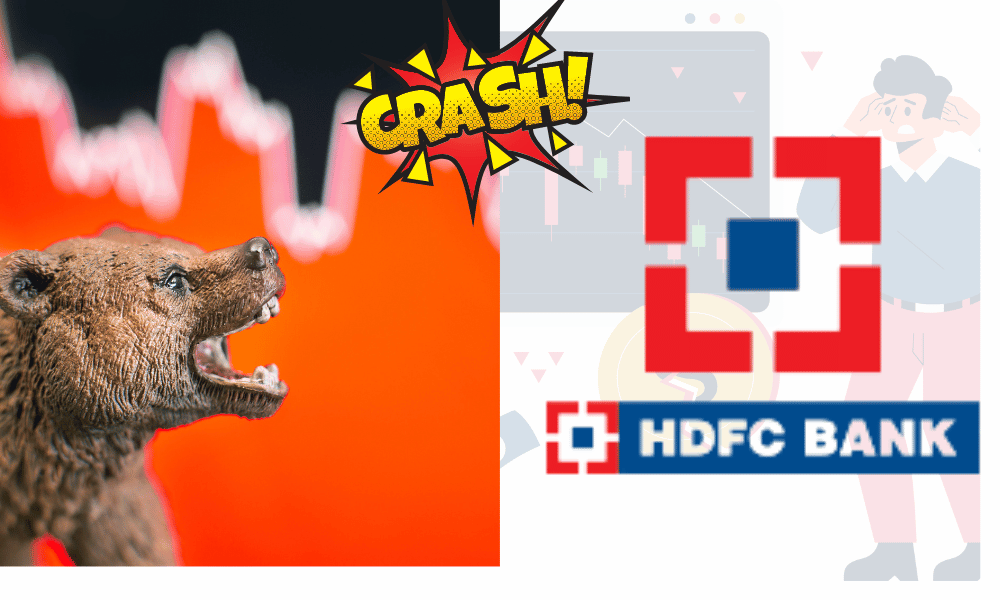HDFC Bank crashed by 8% experienced their worst single-day fall in three years. This sudden downturn erased over 1 lakh crore rupees in market capitalization, with HDFC Bank shares contributing to more than 50% of the overall fall in Nifty and Nifty Bank.
Table of Contents
Root cause for HDFC Bank Crash
The root cause of this significant drop lies in the intricacies of the bank’s financial performance. While the bank reported a profit that surpassed market estimates, it was the margins that raised concerns among investors. Despite a profit beat, the margins remained stagnant at 3.4%, the same as the second quarter when the merger took place.
Click on the picture below to Open Demat account with Zerodha

HDFC Bank Crash
The disappointment stemmed from expectations that the bank had hinted at margin improvement in Q3 after facing challenges in the second quarter due to the incremental cash Reserve ratio. However, this anticipation fell flat, contributing to the sharp decline.
Margin Contraction leading to HDFC Bank Crash
Margins, in this context, refer to the percentage profit the bank makes on every 100 rupees loaned. HDFC Bank, historically known for its margins ranging from 4.2% to 4.3%, found itself under scrutiny as the current margin of 3.4% fell below market expectations.
Reduced Liquidity Coverage Ratio
Further concerns revolved around the bank’s reduced liquidity coverage ratio due to the sale of government securities, leaving no spare cash. The loan-to-deposit ratio at an uncomfortable 110% added to worries, as the bank appeared to be borrowing short to lend long, pressuring margins.
Market sentiment also questioned HDFC Bank’s premium valuation compared to other banks, especially when margins were not expected to rebound to historical levels. The focus shifted to banks like ICICI Bank, which reported a Q2 margin of 4.3%, raising doubts about HDFC Bank’s valuation.
Challenges ahead for HDFC Bank
The bank is expected to achieve a 20% higher operating profit before provisions annually and reduce the cost-to-income ratio by one percentage point.
Adding to the complexity, HDFC Bank’s significant foreign ownership (75%) became a critical factor, especially as the foreign community engaged in selling emerging market assets due to a rise in US bond yields.
The prevailing sentiment suggests that HDFC Bank may face a prolonged challenge rather than a short-term setback, prompting investors to reevaluate the bank’s outlook and its standing in the market.
Disclaimer:
The above content provided regarding HDFC Bank Crash in this web post is for informational purposes only and should not be construed as financial advice. Readers are encouraged to consult with financial professionals before making any significant financial decisions.



